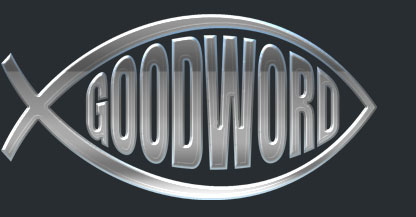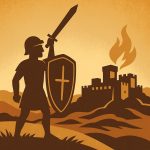| Host: | Brant Berglin |
|---|---|
| Guests: | James Ash |
| Quarter: | Allusions, Images, Symbols |
| Lesson: | 12 |
| Sabbath: | June 21st, 2025 |
Opening Question
What aspects of the future worry you most?
Introduction
This lesson is primarily drawn from Daniel 2 and 3 and some New Testament parallels, especially Relation 13. Generally, Daniel can be divided into two sections: chs. 1-6 are narrative while chs. 7-12 are more prophetic/visionary. Yet in both chs. 2 and 4, Nebuchadnezzar has dreams. In both, Daniel interprets them for the king, setting the stage for, and giving us clues of interpretation regarding, the later chapters of the book.
It often surprises Bible readers when they learn that the narratives of Daniel are just as significant to helping interpret Revelation as are the more prophetic portions. Issues faced by Daniel and his Jewish friends are the exact type of issues faced by God’s people over and over in history. Revelation will draw on this same language.
Daniel 2
Read Daniel 2. King Nebuchadnezzar has visions of the future, and dreams a dream that he cannot make sense of, yet knows has tremendous meaning. When Daniel comes in and interprets the dream, much is disclosed, and the King is enlightened.
What does Daniel say is the reason for the King’s dream? About what was he wondering?
How does God show Himself in this story? What is His plan for the King?
If you were King Nebuchadnezzar, how would you relate to the interpretation? And if you were Daniel, how would you feel giving it, especially after saying, “Oh King, live forever!”
If this vision is a prophetic summary of future kingdoms (and historically, we find it to be shockingly precise!), what part(s) still await fulfillment?
Daniel 2 provides prophetic scholars a template helpful for understanding later prophetic sequences, such as Daniel 7, 8, and 10-12. Likewise, this structure appears to find application in Revelation as well. It’s called historicism, where the prophecy begins at the time of the writer, and continues sequentially until the 2nd Coming or other end-time event such as the judgment.
Daniel 3
Read this chapter as well. Rather than being prophetic/visionary, this chapter is story, a narrative. But it is not unrelated to ch. 2! Because the king was told his kingdom—represented by the golden head of the image—would come to an end, and be replaced by a lesser kingdom, we must read ch. 3 with his kingly hopes in mind. He wants to live forever, to be king of a kingdom that will never come to an end. His erecting of an image entirely of gold in ch. 3 shows his response to the dream. He will make his own future, despite Daniel’s God’s prediction.
As you read the chapter, how many times does it mention who set up this image? Why the repetition?
Also, notice the repetition of those invited, the decree, and the musical response. Again, why so much repeating words? How much thinking is involved in rote reiteration? What does this say about the mindset of those who worship the king’s image?
Describe the character of Daniel’s friends here. How does God show up to help them?
The miracle saving these men is not a sign for them, they already know their God can save. But it becomes a key moment in the life of the King. He will be humbled in ch. 4 and come to know the true God just as Daniel and his friends do!
Revelation 13
Read the second half of Revelation 13 related to the land-beast. This chapter is part of a section starting with the end of ch. 11. The ark of the covenant is seen for the first time suggesting Day of Atonement language, of last-day judgment. The Dragon (Satan) wars against the people of God and the Son (ch. 12), but is defeated and thrown to earth. So he goes off to gets allies in his war with the bride of Christ—a sea-beast, and a land-beast (both in ch. 13). Adventists have commonly seen the Church-state power of Rome in the sea-beast’s description, and the protestant, Christianized western world led by the U.S. as the land-beast.
What parallels do you see between Rev. 13 and Daniel 2-3?
What is the image this time; is it a statue? How is an image “to the first beast” established, and who plays a role in enforcing it?
How is the experience of God’s last-day people similar to that of Shadrach, Meshach, and Abednego? What similar conditions will they face, and how does Daniel’s narrative suggest they respond?
Closing Comments
God has not left us ignorant of the future. He has given us much more than just clues from the past, but actual patterns, parallels, and foreshadowings that predict the broad events of the end. Just as God was with His people then, we can trust He’ll be with us, protecting those who are faithful to Him!




